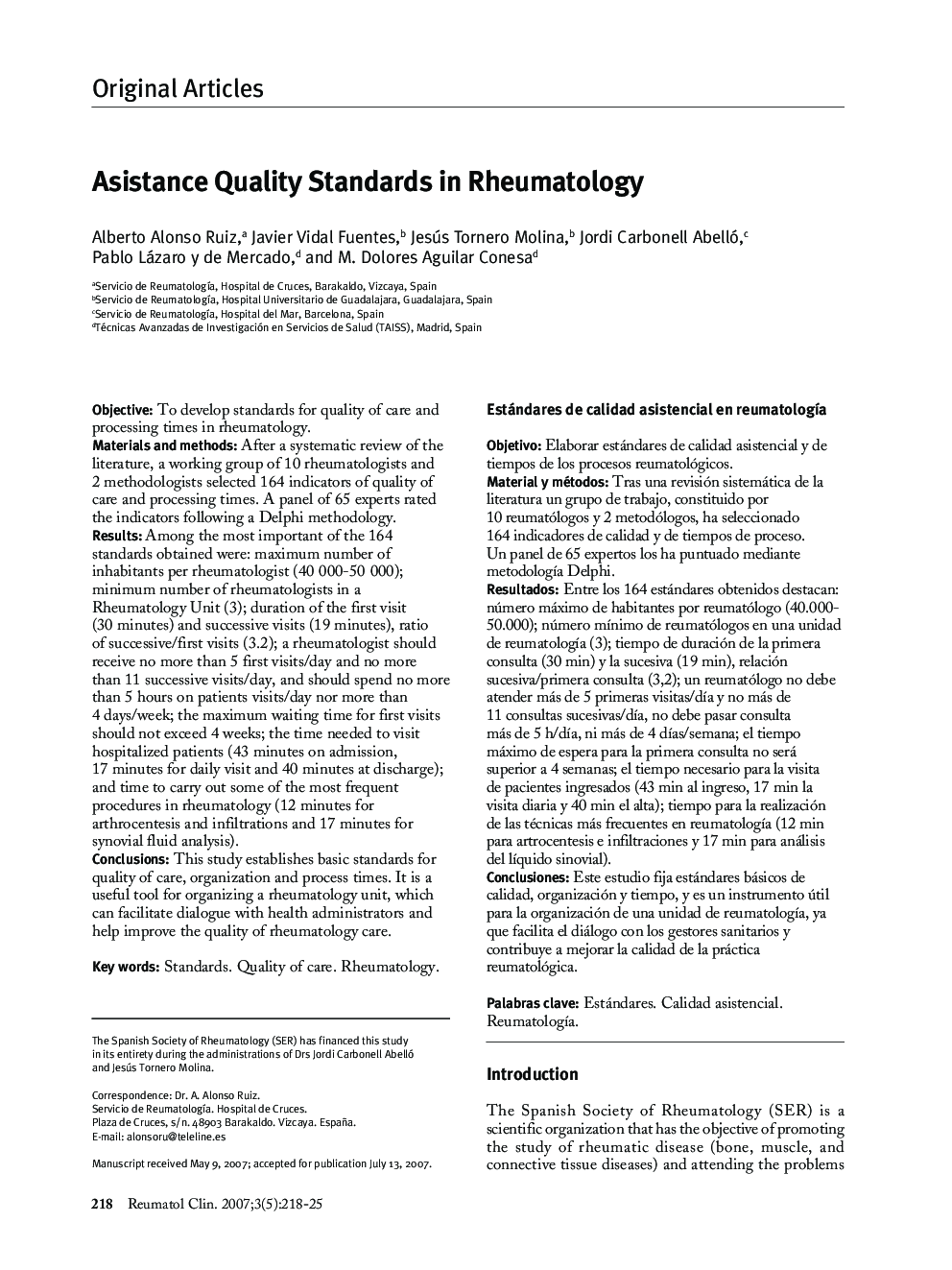| Article ID | Journal | Published Year | Pages | File Type |
|---|---|---|---|---|
| 3384935 | Reumatología Clínica (English Edition) | 2007 | 8 Pages |
ObjectiveTo develop standards for quality of care and processing times in rheumatology.Materials and methodsAfter a systematic review of the literature, a working group of 10 rheumatologists and 2 methodologists selected 164 indicators of quality of care and processing times. A panel of 65 experts rated the indicators following a Delphi methodology.ResultsAmong the most important of the 164 standards obtained were: maximum number of inhabitants per rheumatologist (40 000-50 000); minimum number of rheumatologists in a Rheumatology Unit (3); duration of the first visit (30 minutes) and successive visits (19 minutes), ratio of successive/first visits (3.2); a rheumatologist should receive no more than 5 first visits/day and no more than 11 successive visits/day, and should spend no more than 5 hours on patients visits/day nor more than 4 days/week; the maximum waiting time for first visits should not exceed 4 weeks; the time needed to visit hospitalized patients (43 minutes on admission, 17 minutes for daily visit and 40 minutes at discharge); and time to carry out some of the most frequent procedures in rheumatology (12 minutes for arthrocentesis and infiltrations and 17 minutes for synovial fluid analysis).ConclusionsThis study establishes basic standards for quality of care, organization and process times. It is a useful tool for organizing a rheumatology unit, which can facilitate dialogue with health administrators and help improve the quality of rheumatology care.
ObjetivoElaborar estándares de calidad asistencial y de tiempos de los procesos reumatológicos.Material y métodosTras una revisión sistemática de la literatura un grupo de trabajo, constituido por 10 reumatólogos y 2 metodólogos, ha seleccionado 164 indicadores de calidad y de tiempos de proceso. Un panel de 65 expertos los ha puntuado mediante metodología Delphi.ResultadosEntre los 164 estándares obtenidos destacan: número máximo de habitantes por reumatólogo (40.000- 50.000); número mínimo de reumatólogos en una unidad de reumatología (3); tiempo de duración de la primera consulta (30 min) y la sucesiva (19 min), relación sucesiva/primera consulta (3,2); un reumatólogo no debe atender más de 5 primeras visitas/día y no más de 11 consultas sucesivas/día, no debe pasar consulta más de 5 h/día, ni más de 4 días/semana; el tiempo máximo de espera para la primera consulta no será superior a 4 semanas; el tiempo necesario para la visita de pacientes ingresados (43 min al ingreso, 17 min la visita diaria y 40 min el alta); tiempo para la realización de las técnicas más frecuentes en reumatología (12 min para artrocentesis e infiltraciones y 17 min para análisis del líquido sinovial).ConclusionesEste estudio fija estándares básicos de calidad, organización y tiempo, y es un instrumento útil para la organización de una unidad de reumatología, ya que facilita el diálogo con los gestores sanitarios y contribuye a mejorar la calidad de la práctica reumatológica.
